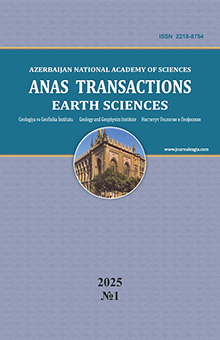№ 1,
2008
Download the article
Some new data on modern tectonic deformation and active faulting in Azerbaijan (according to global positioning system measurements)
1 – Institute of Geology and Geophysics of Azerbaijan National Academy of Sciences, AZ1143, Baku, H.Javid av., 119
2 – Department of Earth, Atmospheric, and Planetary Sciences Massachusetts Institute of Technology, Cambridge, MA, USA
Summary
A-
A+
Global Positioning System (GPS) observations in Azerbaijan and surrounding areas of the Caucasus region are providing quantitative constraints of the geometry of active fault systems, and rates of present-day deformation. West of 48° E longitude, the Main Caucasus Trust Fault (MCT) follows the sharp change in slope along the south side of the Greater Caucasus as is well known from prior seismic, geophysical, and geologic studies. However, east of this longitude the MCT turns sharply to the south, crossing the Kura Depression and extending along the western side of the Caspian Sea (here called the West Caspian Fault; WCF). While the MCT is predominantly a thrust fault west of 48°E longitude, the WCF is a pure right-lateral, strike slip fault with a slip rate of 11 ± 1 mm/yr south of the Absheron Peninsula. We also document shortening of 4 ± 1 mm/yr along the northern side of the Greater Caucasus in Dagestan on a roughly E-W striking fault that turns to the south inland of the north Caspian shoreline. This fault configuration implies that the Baku area is at the junction of four fault systems, the MCT, the West Caspian Fault, the North Caspian Fault, and the Central Caspian Seismic Zone. The rate of convergence on the MCT decreases from east to west from 10 ± 1 mm/yr at 48° E longitude to 4 ± 1 mm/yr in northwestern Azerbaijan (~46°E longitude). In eastern Azerbaijan, there is no evidence of active shortening in the Lesser Caucasus or Kura Depression, indicating that any deformation in this area is below present velocity uncertainties (± 0.5 mm/yr). The present-day pattern of horizontal motions in aggregate suggests that the Lesser Caucasus and Kura Depression are rotating coherently (i.e., little or no internal deformation) in a counterclockwise sense about a pole located near the NE corner of the Black Sea, resulting in the observed W to E increase in the rate of convergence along the MCT. These new, quantitative constraints on fault activity provide an improved physical basis for estimating earthquake hazards in Azerbaijan.
